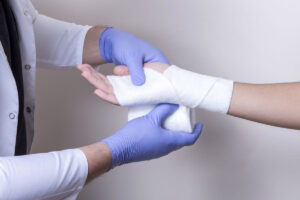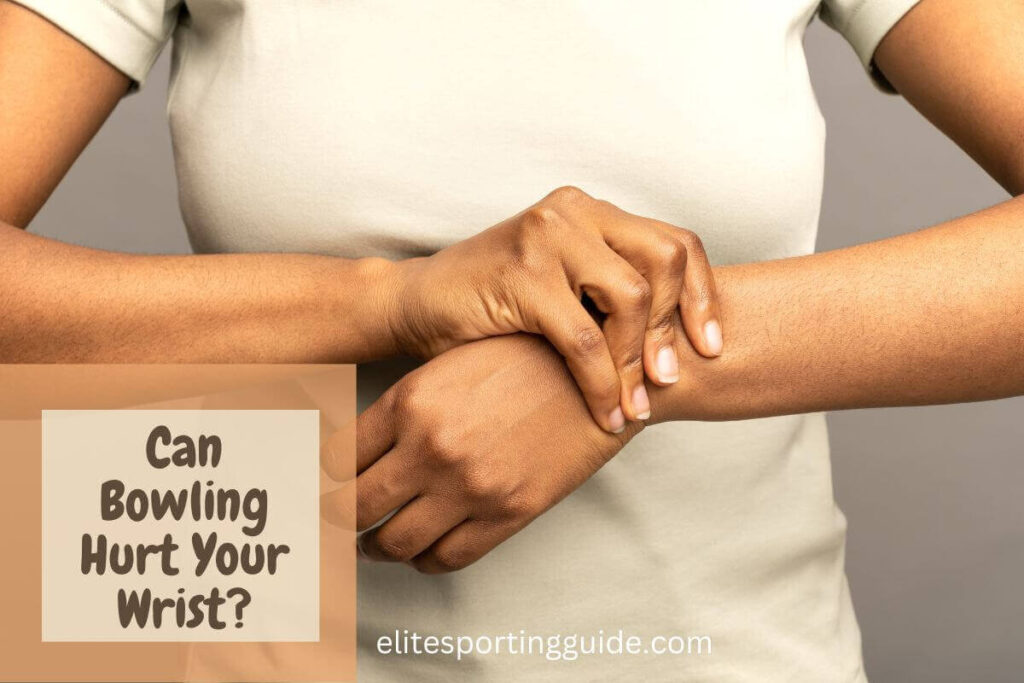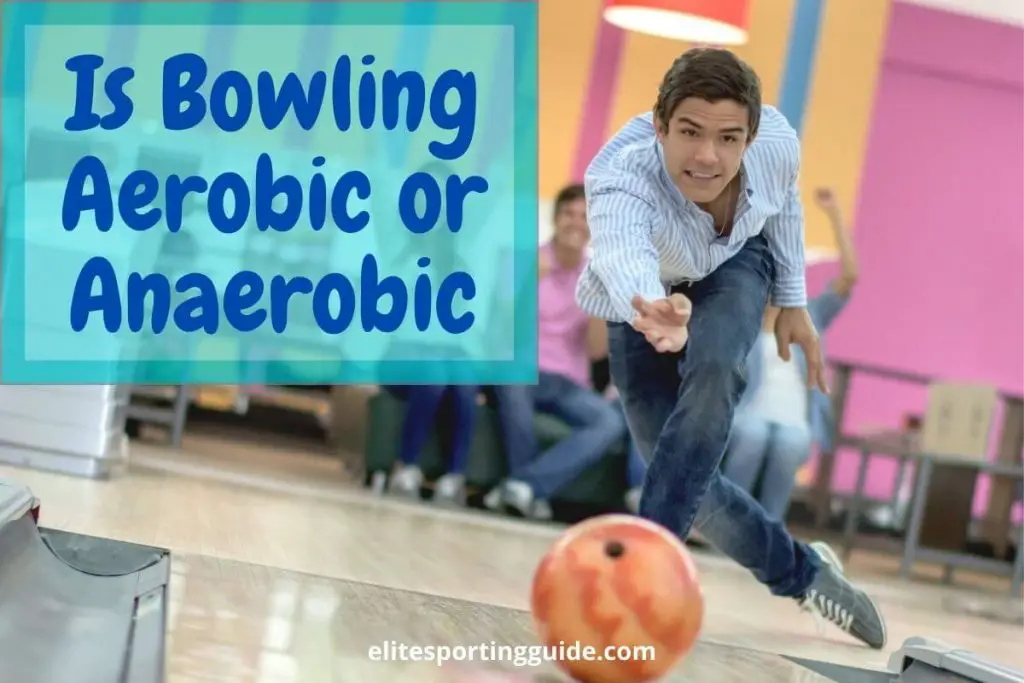The repetitive nature of bowling can potentially place stress on various parts of the body, including the wrist.
This article scouts the question of whether bowling can hurt your wrist and look into the factors that contribute to potential wrist injuries.
By understanding the mechanics of bowling, common causes of wrist pain, and preventive measures, bowlers can take proactive steps to protect their wrist health.
Gaining insight into the impact of bowling on the wrist can help you maintain a safe and enjoyable experience on the lanes.
Can Bowling Hurt Your Wrist?
Yes, bowling can potentially hurt your wrist. The repetitive motion of swinging and releasing the bowling ball, combined with the weight and force exerted on the wrist, can lead to strain, sprains, or other wrist injuries. It is important to practice proper technique, warm-up exercises, and use appropriate equipment to minimize the risk of wrist injuries while bowling.
Common Wrist Injuries in Bowling: Causes and Symptoms
1. Sprains: A sprained wrist is a common injury in bowling and can occur when the wrist is forcefully bent or twisted beyond its normal range of motion.
This can happen during the release of the bowling ball or due to improper wrist positioning. Symptoms of a sprained wrist include pain, swelling, tenderness, and limited range of motion.
2. Strains: Wrist strains are often caused by overuse or repetitive stress on the muscles and tendons of the wrist.
The repetitive motion of bowling can strain these structures, leading to discomfort and pain. Symptoms of a wrist strain include pain, weakness, difficulty gripping objects, and swelling.
3. Tendonitis: Tendonitis refers to the inflammation of the tendons in the wrist and is typically caused by repetitive motions.
In bowling, the repetitive swinging and releasing of the ball can put stress on the tendons, leading to tendonitis. Symptoms include pain, swelling, tenderness, and aching in the wrist.
4. Carpal Tunnel Syndrome: Although less common, carpal tunnel syndrome can occur in bowlers. This condition arises when the median nerve, which runs through the wrist, becomes compressed or irritated.
The repetitive wrist motions in bowling can contribute to the development of carpal tunnel syndrome. Symptoms include pain, numbness, tingling, and weakness in the wrist, hand, and fingers.
5. Fractures: While not as frequent, wrist fractures can happen in bowling, especially in high-impact situations or accidents. Fractures can occur due to a fall or when excessive force is applied to the wrist.
Symptoms of a wrist fracture include severe pain, swelling, deformity, and difficulty moving the wrist.
Understanding the causes and symptoms of these common wrist injuries in bowling is critical for early identification and appropriate treatment.
If you experience persistent pain or symptoms, it is recommended to consult a healthcare professional for a proper diagnosis and guidance on managing and healing the injury.
Risk Factors for Wrist Injuries: Technique and Equipment Considerations

1. Improper Technique: Incorrect bowling technique can significantly increase the risk of wrist injuries. This includes excessive wrist movement during the release, snapping the wrist too forcefully, or bending the wrist excessively.
Poor technique can strain the muscles, tendons, and ligaments in the wrist, leading to injuries. It is essential to learn and practice proper bowling form to minimize the risk of wrist-related issues.
2. Gripping the Ball Incorrectly: Gripping the bowling ball with excessive force or using an improper grip can place undue stress on the wrist. This can lead to muscle strain, tendonitis, and even contribute to carpal tunnel syndrome.
It is important to use a comfortable and correct grip technique that distributes the weight of the ball evenly across the hand and wrist.
3. Using Inappropriate Ball Weight: Using a bowling ball that is too heavy or too light for your strength and skill level can increase the risk of wrist injuries.
A ball that is too heavy can strain the wrist muscles, while a ball that is too light can lead to overcompensation and awkward wrist movements. Choosing the appropriate ball weight based on your capabilities is crucial for preventing wrist injuries.
4. Insufficient Wrist Support: Inadequate wrist support can make the wrist more susceptible to injuries. Bowling wrist supports or braces provide stability and help maintain proper wrist alignment during the swinging and releasing motion.
Lack of proper support can result in excessive wrist movement or strain. Using a wrist support that suits your needs can reduce the risk of injuries.
5. Failure to Warm Up and Stretch: Neglecting to warm up and stretch the wrists before bowling can increase the risk of injuries.
Cold, stiff muscles and tendons are more prone to strains and sprains. Performing wrist warm-up exercises and gentle stretches helps increase blood flow, flexibility, and prepares the wrist for the demands of bowling.
Proper Technique and Form: Reducing Wrist Strain
Using the correct technique and maintaining proper form while bowling is crucial for reducing strain on your wrists.
Here are some tips to help you minimize wrist strain and promote better overall bowling technique:
1. Maintain a Neutral Wrist Position: Throughout your bowling approach and release, strive to keep your wrist in a neutral position. Avoid excessive flexion (bending) or extension (arching) of the wrist.
This helps distribute the force evenly and reduces the risk of putting excessive strain on the wrist joint.
2. Focus on a Relaxed Grip: Avoid gripping the ball too tightly as it can increase tension and strain on your wrist.
Instead, aim for a relaxed and comfortable grip that allows you to have control over the ball without excessive tension. This helps in maintaining wrist flexibility and reduces the risk of injury.
3. Smooth Swing and Release: Work on developing a smooth and fluid swing motion. Avoid any jerky or abrupt movements that can put extra stress on your wrists.
Practice a consistent swing tempo and ensure a controlled and smooth release of the ball, allowing your wrist to follow through naturally.
4. Engage Your Core Muscles: Strong core muscles provide stability and support during your bowling motion. Engage your abdominal and back muscles to maintain a stable and balanced posture throughout your approach.
This helps distribute the forces properly and reduces the strain on your wrists.
5. Seek Professional Guidance: Consider working with a bowling coach or instructor who can provide valuable insights into proper technique and form. They can help identify any areas where your technique may be causing undue strain on your wrists and provide guidance on correcting and refining your approach.
Remember, developing proper technique and form takes time and practice. Be patient and focus on gradually improving your technique.
Pay attention to your body and if you feel any pain or discomfort in your wrists, take a break and assess your form.
Making adjustments to reduce strain and promote better wrist alignment will not only improve your bowling performance but also help protect your wrists from potential injuries.
Choosing the Right Equipment: Bowling Balls and Wrist Supports

When it comes to protecting your wrist health, selecting the right bowling ball is crucial.
Consider factors such as weight, grip, and coverstock material.
A ball that is too heavy can strain your wrist, while one that is too light may lead to overcompensation and awkward movements.
Experiment with different ball weights to find the one that allows for a comfortable and controlled release.
Additionally, pay attention to the grip holes. They should fit your hand properly, promoting a relaxed grip without excessive tension.
Consulting with knowledgeable staff at the bowling alley or a pro shop can help you make an informed decision and ensure a suitable ball choice.
In addition to choosing the right ball, utilizing wrist supports can provide valuable protection for your wrist.
Wrist supports or braces help stabilize the wrist, promote proper alignment, and reduce strain during the bowling motion. There are various types of wrist supports available, including full-length wraps or shorter wrist bands.
Experiment with different options to find the one that suits your comfort and support needs.
Wearing a wrist support can help prevent excessive movements and provide additional stability, minimizing the risk of wrist injuries and allowing you to enjoy bowling with greater confidence.
Post you may be interested in: Does Bowling Relieve Stress?
Wrist Warm-up and Stretching Exercises: Preparing for Bowling
Properly warming up and stretching your wrists before bowling is essential to prepare your muscles and joints for the physical demands of the sport.
Here are some wrist warm-up and stretching exercises to incorporate into your pre-bowling routine:
1. Wrist Circles: Extend your arm in front of you with your palm facing down. Make gentle circular motions with your wrist, rotating it clockwise for several repetitions, and then switch to counterclockwise rotations.
This exercise helps to improve flexibility and increase blood flow to the wrist joint.
2. Wrist Flexor Stretch: Extend your arm in front of you with your palm facing up. Use your other hand to gently pull your fingers back toward your body, feeling a stretch in the inside of your forearm and wrist.
Hold this stretch for 15-30 seconds and repeat on the other hand. This stretch targets the muscles on the palm side of your wrist.
3. Wrist Extensor Stretch: Extend your arm in front of you with your palm facing down. Use your other hand to gently pull your fingers down and back, feeling a stretch in the top of your forearm and wrist.
Hold this stretch for 15-30 seconds and repeat on the other hand. This stretch targets the muscles on the back side of your wrist.
4. Fist Squeezes: Make a fist with your hand and squeeze it as tightly as you can for a few seconds. Then, release the tension and open your hand wide, extending your fingers fully.
Repeat this squeezing and releasing motion for several repetitions. Fist squeezes help to strengthen the muscles in your hand and wrist.
5. Wrist Flexor and Extensor Resistance Exercises: Using a resistance band or a small hand exercise device, perform wrist flexion and extension exercises.
For wrist flexion, hold the band or device with your palm facing up and curl your wrist upward against the resistance. For wrist extension, hold the band or device with your palm facing down and extend your wrist backward against the resistance.
Perform 10-15 repetitions of each exercise.
Incorporating these warm-up and stretching exercises into your pre-bowling routine can help improve wrist flexibility, increase blood flow, and reduce the risk of wrist injuries.
Remember to perform the exercises in a controlled and pain-free manner. If you have any pre-existing wrist conditions or concerns, it is advisable to consult with a healthcare professional before starting any exercise routine.
Related post: Can Bowling Cause Neck Pain?
Recovery and Rehabilitation: Healing Wrist Injuries
In the unfortunate event of a wrist injury while bowling, proper recovery and rehabilitation are essential for a full and safe return to the sport. Here are some key considerations for healing wrist injuries:
1. Medical Evaluation: If you experience a severe or persistent wrist injury, it is essential to consult a healthcare professional for a comprehensive evaluation.
They can assess the extent of the injury, provide an accurate diagnosis, and recommend the appropriate treatment plan.
2. Rest and Immobilization: Depending on the severity of the injury, the initial phase of recovery may involve rest and immobilization.
This may include wearing a brace, cast, or splint to protect and stabilize the injured wrist. It is important to follow the medical professional’s advice regarding the duration of immobilization.
3. Rehabilitation Exercises: As the wrist begins to heal, a structured rehabilitation program is often recommended to restore strength, flexibility, and range of motion.
Physical therapy exercises that target the wrist and surrounding muscles can help promote healing and prevent future injuries. It is crucial to follow the guidance of a qualified physical therapist or rehabilitation specialist to ensure proper technique and progression.
4. Gradual Return to Bowling: Once the injured wrist has sufficiently healed and gained strength, a gradual return to bowling can be initiated.
Start with light bowling balls and reduced intensity, gradually increasing the weight and intensity over time. It is important to listen to your body and not push beyond your limits to avoid reinjury.
5. Injury Prevention Strategies: To minimize the chances of reoccurring wrist injuries, it is essential to continue practicing preventive measures even after recovery.
This includes maintaining proper technique, using appropriate equipment, and engaging in regular wrist-strengthening exercises to improve stability and resilience.
The healing process for wrist injuries can vary depending on the severity of the injury and individual factors. It is beneficial to follow the guidance of medical professionals and be patient with the recovery process.
By giving your wrist the proper time to heal and undertaking a structured rehabilitation program, you can maximize your chances of a successful recovery and return to the sport you love.
Maintaining Wrist Health for Enjoyable Bowling
Keeping your wrist healthy is imperative for enjoying the sport of bowling to the fullest.
By understanding the mechanics of bowling, being aware of common wrist injuries, and implementing preventive measures, you can protect your wrist and minimize the risk of discomfort or injury.
Practicing proper technique, using the right equipment such as appropriately weighted bowling balls and wrist supports, and incorporating warm-up exercises and stretches can go a long way in maintaining wrist health.
Listen to your body and take breaks when needed. If you experience persistent pain or discomfort in your wrist, seek medical attention for a proper diagnosis and appropriate treatment.
By prioritizing wrist health and implementing preventive measures, you can continue to bowl with confidence and enjoy this beloved sport for years to come.
Happy bowling!



